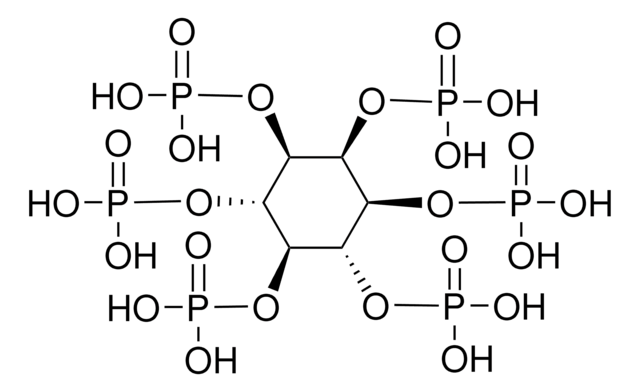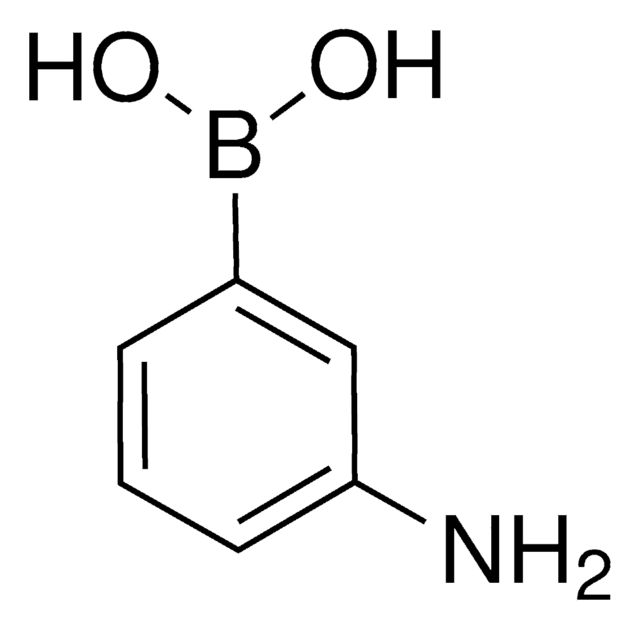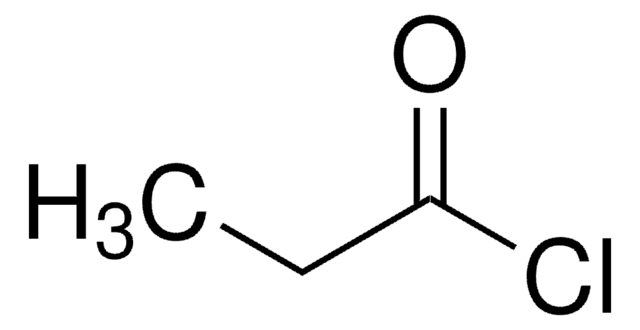593648
Phytic acid solution
50 % (w/w) in H2O
Synonym(s):
myo-Inositol hexakis(dihydrogen phosphate)
About This Item
Recommended Products
Quality Level
concentration
50 % (w/w) in H2O
bp
105 °C
density
1.432 g/mL at 25 °C
functional group
phosphate
SMILES string
OP(O)(=O)O[C@@H]1[C@H](OP(O)(O)=O)[C@H](OP(O)(O)=O)[C@@H](OP(O)(O)=O)[C@H](OP(O)(O)=O)[C@H]1OP(O)(O)=O
InChI
1S/C6H18O24P6/c7-31(8,9)25-1-2(26-32(10,11)12)4(28-34(16,17)18)6(30-36(22,23)24)5(29-35(19,20)21)3(1)27-33(13,14)15/h1-6H,(H2,7,8,9)(H2,10,11,12)(H2,13,14,15)(H2,16,17,18)(H2,19,20,21)(H2,22,23,24)/t1-,2-,3-,4+,5-,6-
InChI key
IMQLKJBTEOYOSI-GPIVLXJGSA-N
Looking for similar products? Visit Product Comparison Guide
Related Categories
General description
Application
- Phytic acid in dental applications: A 2024 study explores the effectiveness of phytic acid as an irrigation solution to improve the adhesion and sealing properties of calcium silicate-based cements in endodontic treatments, demonstrating its potential as a chelating agent in dental procedures (Koçak Şahin and Ünal, 2024).
- Phytic acid in energy storage: Phytic acid is utilized to stabilize magnesium metal anodes in battery technology, contributing to the development of more durable and efficient energy storage systems (Wen et al., 2024).
- Phytic acid in battery technology: Another 2024 study incorporates phytic acid in the development of a hydrogel polymer electrolyte and cathode material for rechargeable zinc metal hydrogel batteries, highlighting its role in enhancing the performance and stability of battery systems (Dilwale et al., 2024).
- Phytic acid in strain sensors: Research focuses on the use of a nacre-mimetic structure multifunctional ion-conductive hydrogel, enhanced by phytic acid, for developing high-performance strain sensors with significant implications in wearable technology and robotics (Wang et al., 2024).
Signal Word
Danger
Hazard Statements
Precautionary Statements
Hazard Classifications
Acute Tox. 4 Oral - Eye Dam. 1 - Met. Corr. 1 - Skin Corr. 1
Storage Class Code
8A - Combustible corrosive hazardous materials
WGK
WGK 3
Flash Point(F)
Not applicable
Flash Point(C)
Not applicable
Personal Protective Equipment
Choose from one of the most recent versions:
Already Own This Product?
Find documentation for the products that you have recently purchased in the Document Library.
Our team of scientists has experience in all areas of research including Life Science, Material Science, Chemical Synthesis, Chromatography, Analytical and many others.
Contact Technical Service









